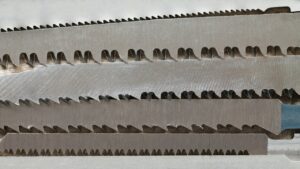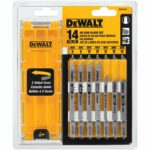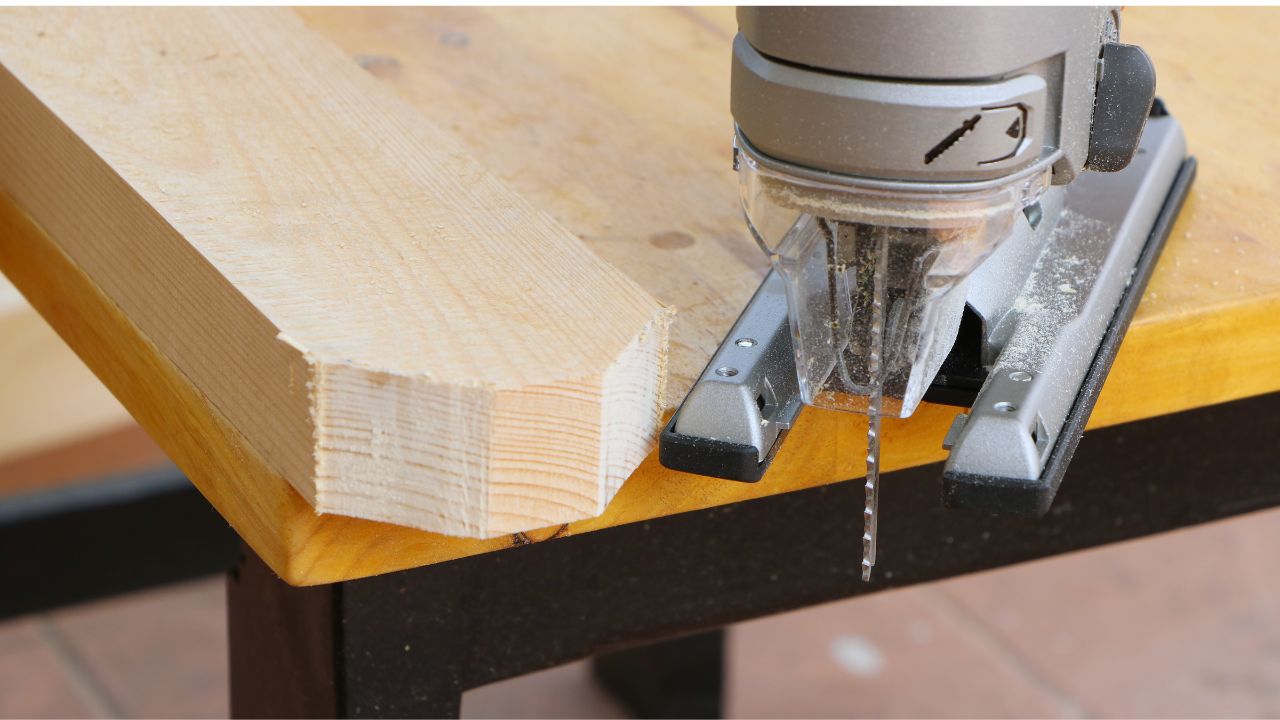Last Updated on October 18, 2023 by Pro Handyman Australia – Editorial Team
Understanding different jigsaw blade types is crucial for achieving the perfect cut. The choice hinges on various factors: blade material, length, teeth per inch (TPI), and shank type, be it T-shanks or U-shanks. In the quest for a flawless finish, especially in DIY projects, it’s vital to select the right blade type. If you’re also wondering How to Use a Jigsaw effectively, you’re in the right place. In this guide, we delve deep into the world of jigsaw blades, offering insights on their usage, characteristics, and techniques for optimal results.
A Brief Overview of the Jigsaw
A jigsaw is a power tool essential, prized for its precision in crafting curves and intricate shapes. With a vertically oscillating blade, variable speeds, and a stable saw shoe, a jigsaw effortlessly creates detailed cuts. Loved by both beginners and experts, its stability and versatility make it a must-have for any workshop.
Choosing the Right Jigsaw Blade
Decoding the Jigsaw Blade Types

At the heart of a jigsaw’s adaptability is its interchangeable blade. Each blade type is designed for specific tasks and materials. For example, while high TPI blades produce fine cuts, they work slower. Blade material is equally critical; cutting metal requires a harder blade. Available blade options include metal blades, high carbon steel, high-speed steel, tungsten carbide, and bimetal. Matching the right blade to the material – be it wood, plastic, or metal – ensures the desired finish.
Several jigsaw blades, each with unique characteristics, are at your disposal, much like the considerations you make when learning how to clean a table saw blade, ensuring it’s ready for precise cuts. These jigsaw options range from metal blades, high carbon steel, and high-speed steel to tungsten carbide and bimetal blades. When armed with the right blade, one can achieve diverse finishes on a plethora of materials, encompassing wood, plastics, and metals. Similarly, understanding the cleaning and maintenance behind each type of blade can significantly enhance the durability and effectiveness of your jigsaw blades.
Shank Type: T-shank vs. U-shank
When selecting a blade, the first step is ensuring its compatibility with your jigsaw. Modern jigsaws often accommodate both U-shanks and T-shanks. However, older models might solely cater to U-shank blades. U-shank blades have waned in popularity for newer models since they necessitate a screw to secure the blade, which can be cumbersome and typically demands an additional tool. In contrast, contemporary jigsaws predominantly employ T-shank blades due to their user-friendly nature. T-shank blades are devoid of screws and attach seamlessly using a clamp, facilitating rapid blade swaps. Thus, if you own a newer jigsaw, chances are it’s tailored for T-shank blades.
Determining the Cutting Material and Desired Finish
The nature of the material you plan to cut plays a pivotal role in blade choice. Intrinsically harder materials, such as metals, necessitate blades that are sturdier and have a superior TPI. Conversely, malleable materials are best addressed with a more pliable blade.

Beyond the material, the envisioned cut type is paramount. Rough work demands blades with a reduced TPI, resulting in swifter yet coarser cuts. For precision cuts or intricate angles, a blade with heightened TPI and enhanced flexibility is ideal. It’s crucial to ascertain that the blade possesses an adequate length to stave off snags; ideally, a blade should extend roughly 2.5cm beyond the material’s thickness.
Evaluating Blade Composition
The blade’s material remains a critical factor when making a selection. It’s essential to sidestep blades that succumb to premature wear or fracture upon encountering resistant materials.
- High Carbon Steel (HCS): Revered for their affordability and popularity, HCS blades cater predominantly to softer materials like softwood. Their inherent flexibility minimizes the snapping risk, rendering them optimal for precision-oriented tasks. However, it’s advised to abstain from employing them on harder substrates as they tend to lose their edge swiftly.
- High-Speed Steel (HSS): These blades, more robust than HCS counterparts, are adept at slicing through resilient materials like copper and aluminum. Their elevated hardness translates to prolonged sharpness retention. Yet, their augmented brittleness can lead to a heightened snapping propensity.
- Bimetal (BIM): A harmonious amalgamation of HSS and HCS properties, bimetal blades offer the hardness required to endure challenging materials while simultaneously retaining flexibility to mitigate breakage. Given their extended lifespan, they typically command a higher price.
Defining Your Desired Cut
A jigsaw’s allure lies in its adaptability, offering a plethora of cutting options based on the blade employed. For straightforward cuts where neatness isn’t paramount, a blade with a lower TPI will expedite the process.
However, the true prowess of a jigsaw is manifested when crafting curves. The intricacy of the curve dictates the TPI—opt for a TPI ranging between 9-12 for gentle curves. For meticulous work or intricate woodworking, targeting a TPI over 20 is recommended for achieving precision and finesse.
Furthermore, the blade’s tooth design also plays a pivotal role. Milled teeth, being set at angles, facilitate faster cutting at the expense of a polished finish. In contrast, ground teeth, with their straight alignment, ensure refined cuts but may lead to material burns if not wielded with care due to increased friction.
Understanding Teeth Per Inch (TPI)

The TPI metric is instrumental in predicting both the speed and finesse of a cut. A higher TPI blade is synonymous with neater outputs, especially valuable in precision-oriented tasks such as woodworking, albeit at a slightly reduced speed. Conversely, for rough tasks where aesthetics aren’t a priority, a blade with a lower TPI will ensure rapid cutting.
Optimal Blades for Diverse Materials
With jigsaw blades, a generalized approach seldom suffices.
- Wood: This malleable material typically doesn’t demand high TPI values, especially for rudimentary tasks. A TPI within the 6-20 range is well-suited for wood. Given its malleability, wood is readily cut with flexible blades, such as the HCS variant. These blades are particularly efficacious for precision woodworking, ensuring that a higher TPI is utilized. Being less prone to breakage and more cost-effective, they’re exemplary for woodworking.
- Metal: A stark contrast to wood, metal necessitates both a robust blade and a higher TPI due to its innate hardness. Seek blades with a TPI between 20-35. Additionally, prioritize blade materials fortified enough for metals, such as HSS, BIM, or tungsten carbide variants. It’s paramount to discern that different metals have varying requirements, so it’s crucial to match the blade to the specific metal type and ensure the metal’s thickness is congruent with the chosen blade’s capabilities.
User Experience: Stories from the Workshop
Over the years, various jigsaw blade types have been produced and utilized by both DIY enthusiasts and professionals alike. By delving into their hands-on experiences, we can gather invaluable insights on which blades truly stand out.

Bosch 2607010630: Sophie, an interior designer from New York, recently shared her experience with the Bosch 2607010630. “For my intricate furniture designs, it’s essential that the blade I use provides a clean, precise cut. With the 2607010630, I’ve been able to achieve just that. Moreover, its longevity means I don’t have to replace it frequently.”

DeWalt DW3742C T-Shank: Jake, a carpenter from Texas, swears by the DeWalt DW3742C T-Shank blade for his rough cutting tasks. “When it comes to cutting through softwood quickly, this blade is my go-to. While it’s not suited for detailed work, it’s perfect for the bulk of my tasks.”
In-depth Comparisons: Battle of the Blades
When it comes to jigsaw blades, the market is filled with numerous options. To assist our readers in navigating this vast selection, we’ve crafted a comparative chart of some top models, evaluating them based on power, longevity, and price.
| Model | Power (out of 10) | Longevity (Months) | Price ($) |
|---|---|---|---|
| Bosch 2607010630 | 8 | 10 | 25 |
| DeWalt DW3742C T-Shank | 7 | 8 | 20 |
| Makita A-86898 | 9 | 12 | 28 |
| Black+Decker 75-626 |
While this table provides a quick glance into the performance of each blade, it’s essential to remember that the best blade for you largely depends on the specific requirements of your project.
Steps to Safely Change a Jigsaw Blade
1. Ensure Safety First:
Before initiating any changes, it’s essential to prioritize safety. Disconnect the jigsaw from its power source. If it’s a corded jigsaw, unplug it. For cordless versions, remove the battery.
2. Positioning for a Clear View:
Hold the jigsaw with the front facing you. From this angle, the blade’s teeth will be clearly visible, pointing in your direction.
3. Identifying the Connection Type:
The point where the blade attaches to the jigsaw is crucial. Typically, there are two predominant connection systems:
- Quick-Clamp System (often seen with T-shank blades)
- Screw System (commonly associated with U-shank blades)
The type of connection will guide the subsequent steps.
4. For Quick-Clamp System (T-shank):
- Locate the blade release lever. This is typically at the top or side of the jigsaw.
- Push or pull the lever, depending on your jigsaw model. This action causes a rod to move forward, releasing the jigsaw blade.
- Carefully, and while being aware of the blade’s sharp teeth, extract the old blade by drawing it downwards and out of its clamp.
- To introduce a new blade, the clamp should be open. If it isn’t, operate the lever again to ensure it’s ready to secure the new blade.
Wrapping Up
In conclusion, while changing a jigsaw blade might appear intimidating initially, the process is straightforward with a systematic approach. Similarly, questions like if you can put a cold cut blade on an abrasive saw arise, underscoring the importance of understanding tool compatibilities. It’s always essential to put safety first by ensuring the tool is unplugged or the battery is removed. By familiarizing oneself with the jigsaw’s connection type and following the relevant steps, the blade can be efficiently and safely replaced.
